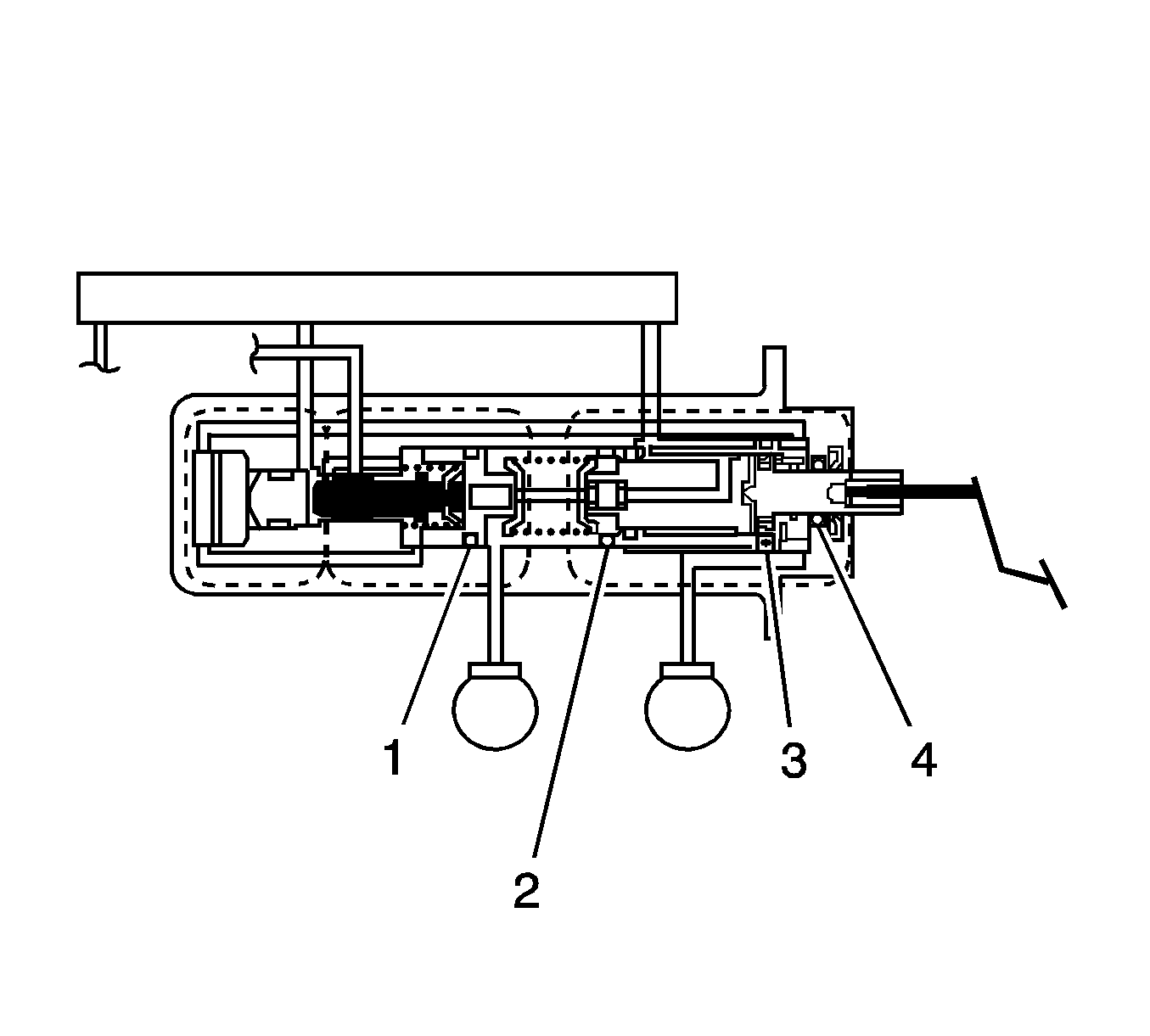Caution: Refer to Brake Fluid Irritant Caution in the Preface section.
Notice: Refer to Brake Fluid Effects on Paint and Electrical Components Notice in the Preface section.
- Start the engine and allow it to idle.
- Apply light, steady pressure to the brake pedal. Observe both the brake pedal feel and travel.
- Release the brakes and turn OFF the ignition.
- If the brake pedal apply felt spongy, but the brake pedal travel was not excessive, perform the following steps:

- Turn the ignition to the ON position.
- If the brake pedal apply did not feel spongy, but the brake pedal travel was excessive, perform the following steps:
| 6.1. | Bleed the brake system. |
| 6.2. | If the pedal feel did not change, seal (2) is bad. |
- If the brake pedal apply did not feel spongy, and the brake pedal travel was initially steady and not excessive, then gradually fell, seal (2) has failed. Replace the master cylinder. Refer to
Master Cylinder Replacement
.
- If the pedal did not feel spongy, and the pedal travel was excessive, and the motor activated longer than 20 seconds, or continuously, seal (3) or (4) has failed. Replace the master cylinder. Refer to
Master Cylinder Replacement
.
- If the pedal did not feel spongy, and travel was initially steady and not excessive, then gradually traveled back toward the unapplied position, seal (1) has failed. Replace the master cylinder. Refer to
Master Cylinder Replacement
.

